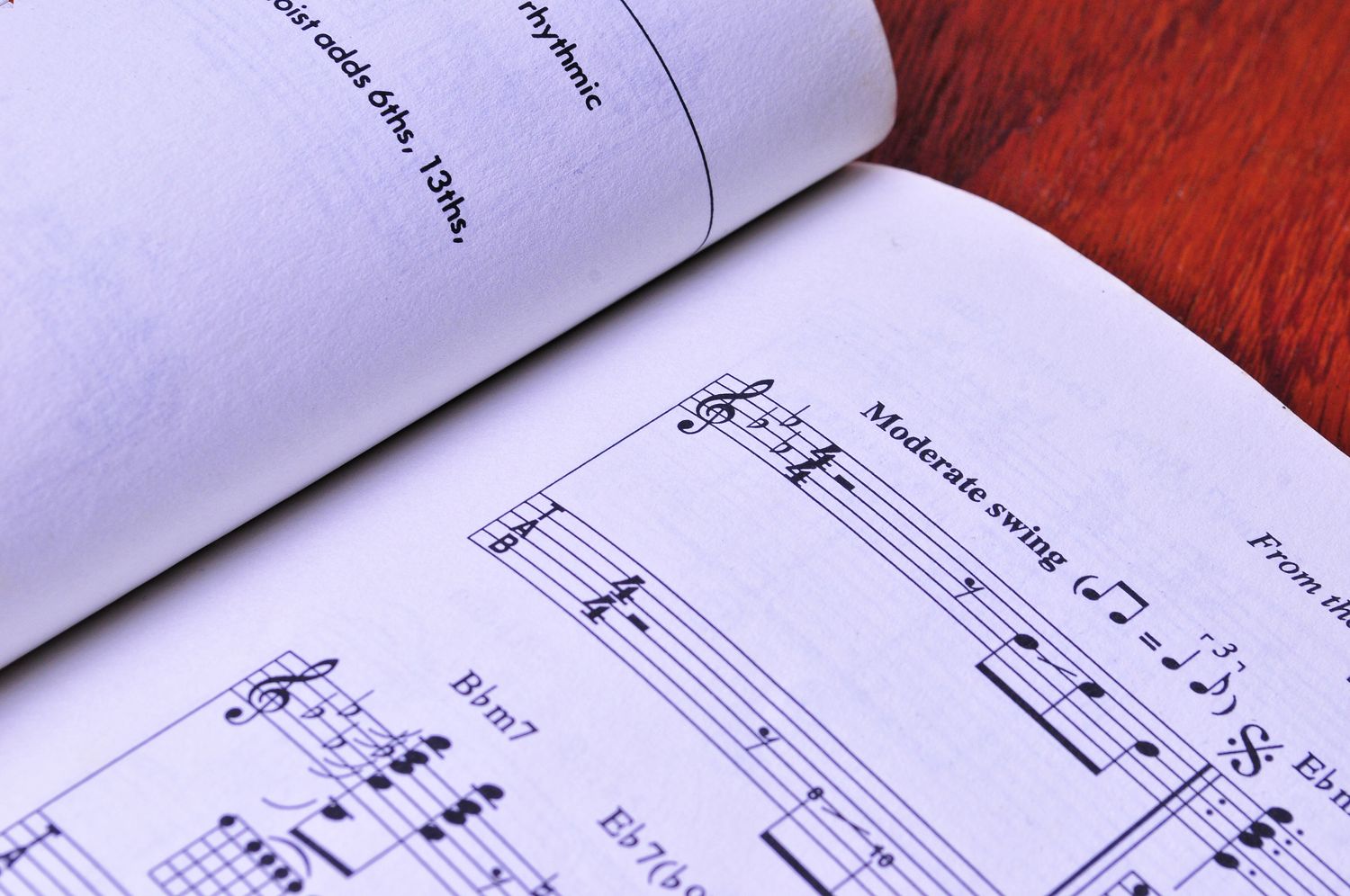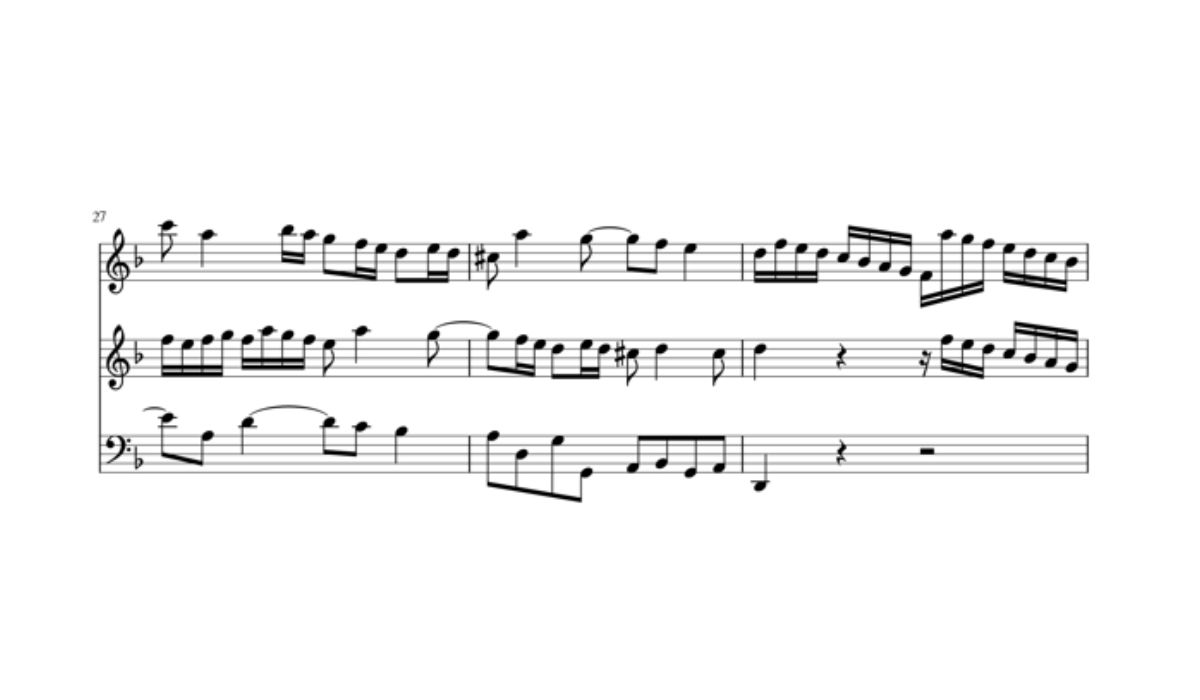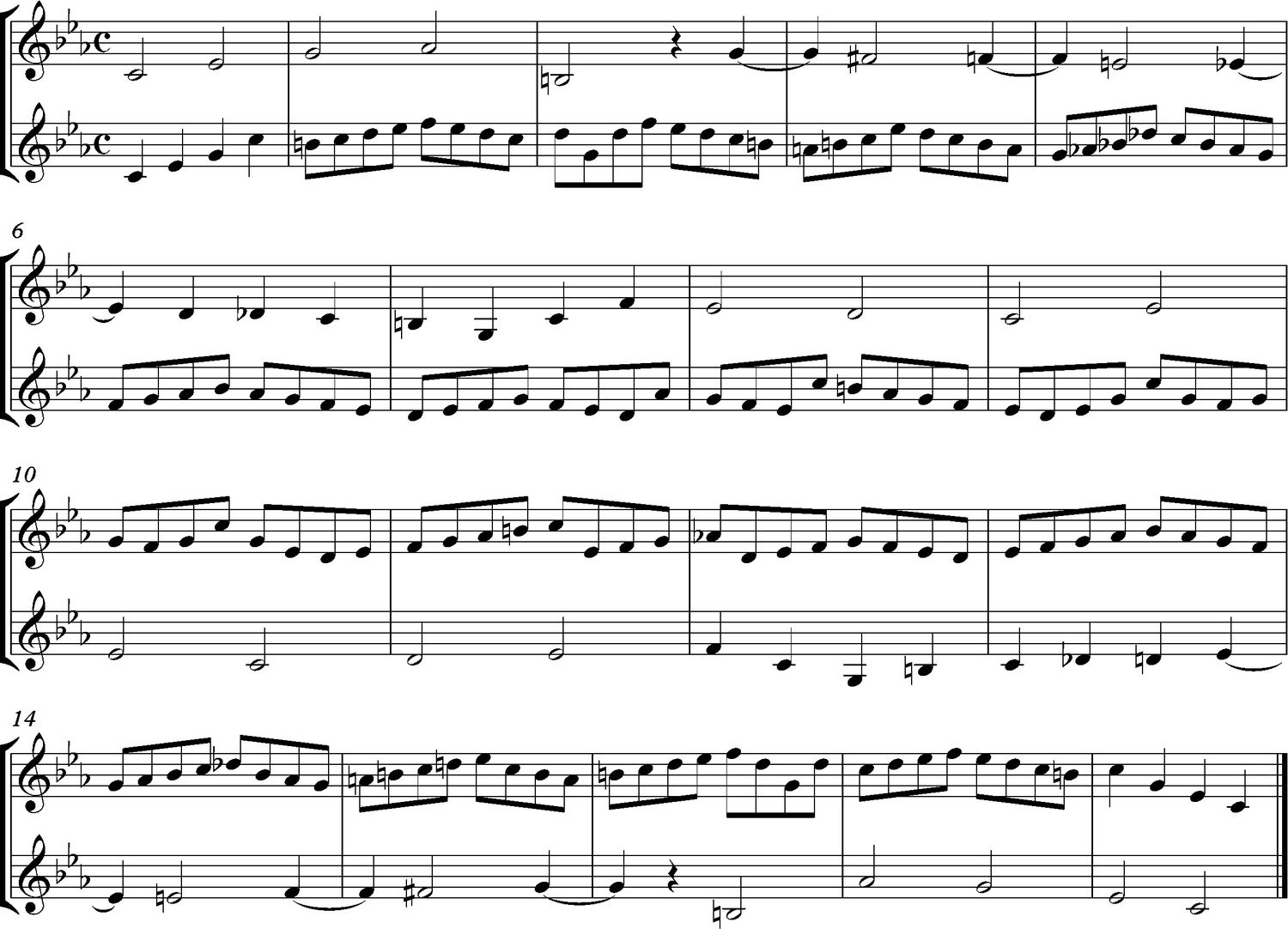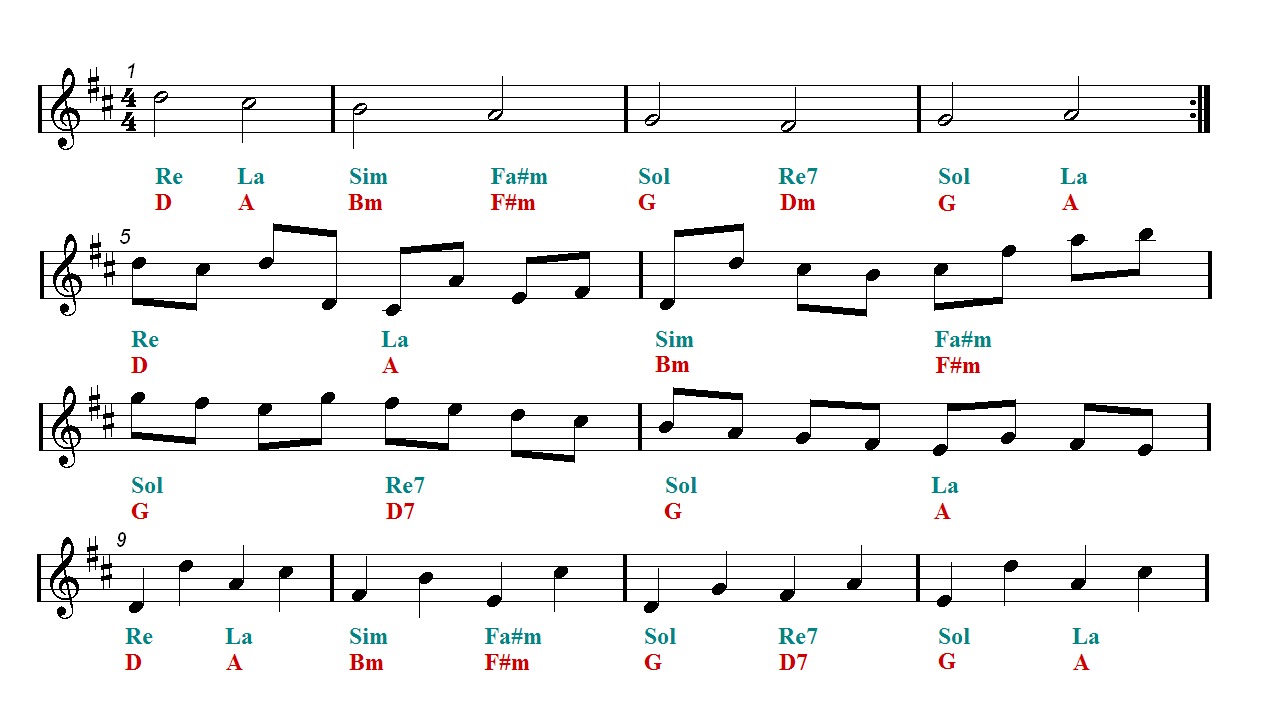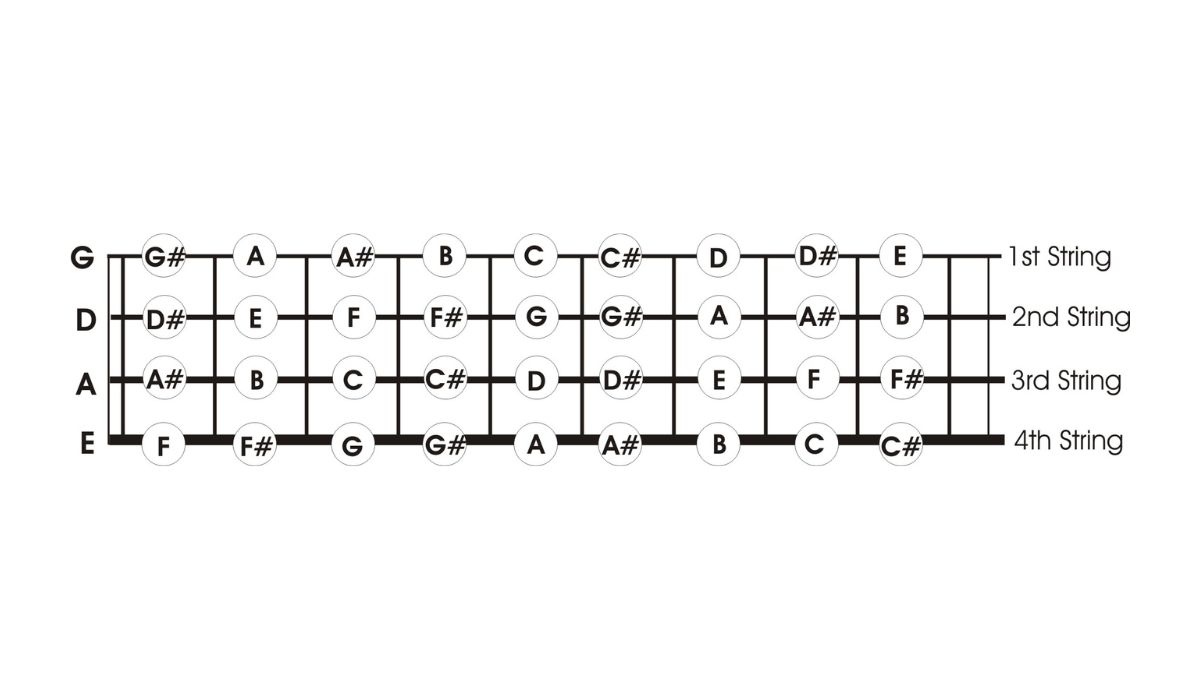Home>Production & Technology>Music Theory>What Is A Key Music Theory
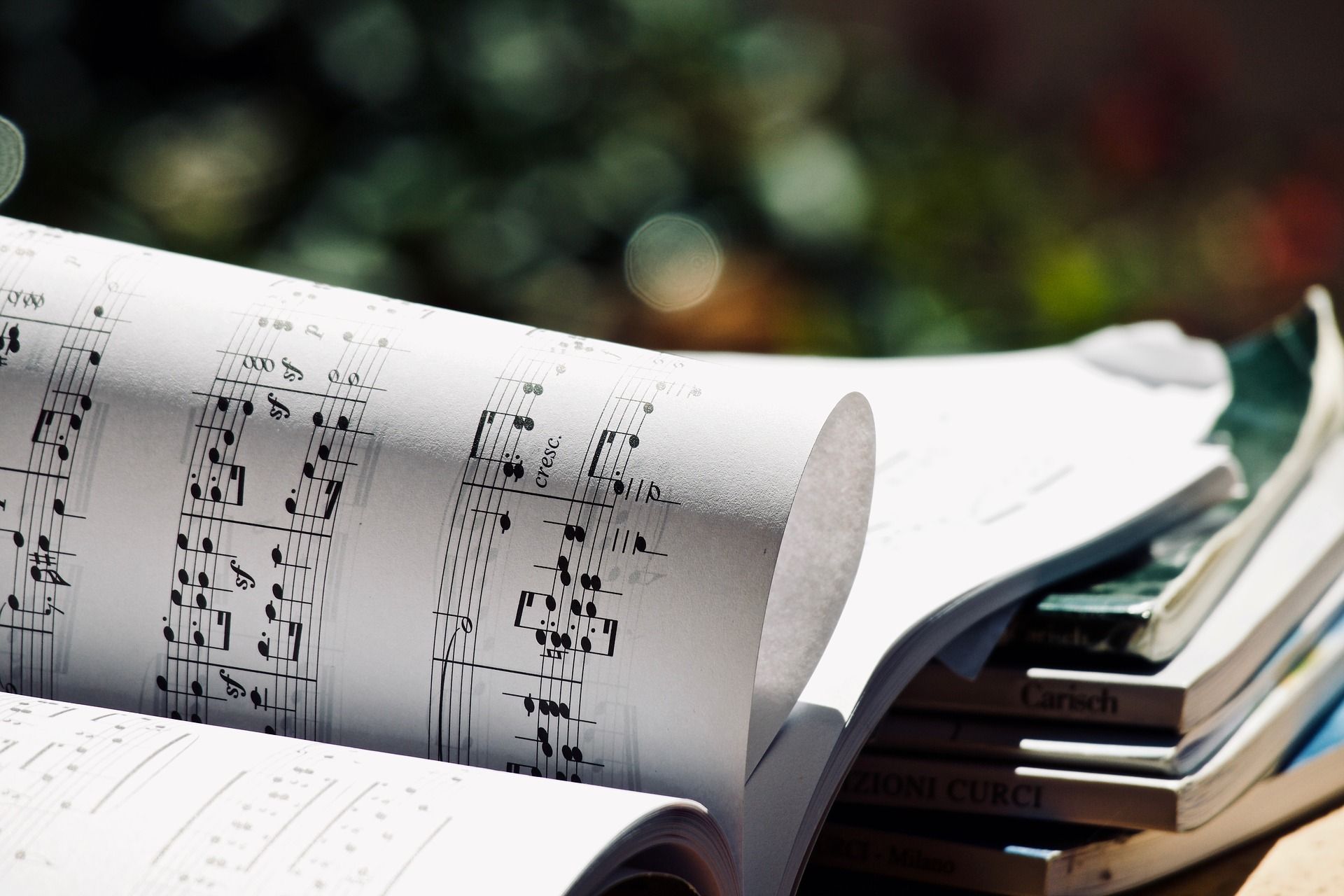

Music Theory
What Is A Key Music Theory
Modified: January 31, 2024
Discover the importance of music theory and how it unlocks the secrets behind melodies and harmonies. Explore the fundamentals and practical applications of music theory today!
(Many of the links in this article redirect to a specific reviewed product. Your purchase of these products through affiliate links helps to generate commission for AudioLover.com, at no extra cost. Learn more)
Table of Contents
Introduction
Music theory is the foundation of creating and understanding music. It provides a framework for musicians to analyze, interpret, and communicate musical ideas. One of the fundamental concepts in music theory is the notion of “key.” In this article, we will delve into what a key is in music theory, its significance, and how it is used in composition and performance.
At its core, a key is a set of musical notes organized around a central tonal center. The concept of a key allows composers and musicians to establish a sense of stability and coherence in their compositions. It gives us a tonal framework to work with, providing a set of guidelines and rules to help build melodies, harmonies, and chord progressions that sound harmonious and expressive.
Understanding key is crucial for musicians of all levels. Whether you’re a beginner learning your first instrument or an experienced composer, having a solid understanding of key can greatly improve your musical skills and creativity. By grasping the concept of key, you’ll be able to analyze and comprehend music more effectively, improvise and compose with greater fluency, and communicate musical ideas more accurately with other musicians.
Throughout this article, we will explore the various aspects of key in music theory. We will cover key signatures, major and minor keys, tonal centers, modal keys, and key changes. By the end, you’ll have a comprehensive understanding of what key is and how it shapes the music we listen to and create.
Defining Key in Music Theory
In music theory, a key refers to the tonal center around which a piece of music revolves. It serves as the anchor point for establishing a sense of harmony, melody, and modulation within a composition. A key provides a set of musical notes or pitches that are organized in a hierarchical structure, with one note serving as the tonic or home base.
When we say a piece of music is in a specific key, it means that the majority of the musical material is centered around that particular tonic note. The other notes in the key serve as harmonic and melodic support, creating a cohesive and tonally centered piece of music.
The key in music theory is identified by a letter name, followed by a major or minor designation. For example, the key of C major is centered around the note C, while the key of A minor is centered around the note A. The letter name of the key is determined by the tonic note, which gives the key its characteristic sound and emotional quality.
When a piece of music is in a specific key, it provides a tonal framework that determines which notes and chords are most commonly used. The notes and chords that naturally occur within a key are known as the diatonic notes and chords. These diatonic elements form the foundation of the harmonic and melodic structure of the music.
Additionally, the key of a piece will influence other elements of the composition, such as the choice of scales, modes, and chord progressions. The key also has a significant impact on the emotional and expressive qualities of the music. Different keys can evoke different moods and emotions, adding depth and variety to musical compositions.
In summary, a key in music theory establishes a tonal center around which a piece of music is built. It determines the choice of notes, chords, and scales, and influences the overall sound and emotional impact of a composition. Understanding the concept and significance of key is essential for musicians and composers to create harmonically coherent and expressive music.
Importance of Understanding Key
Understanding key in music theory is of utmost importance for musicians and composers. It serves as a musical compass, guiding the choices we make in composition, performance, and analysis. Here are a few reasons why understanding key is essential:
- Harmonic Coherence: Key provides a framework for creating harmonically coherent music. By understanding the tonal center, musicians can choose chords and progressions that align with the key, resulting in a more pleasing and structured sound.
- Melodic Guidance: Key helps guide melodic choices within a composition. By staying within the notes of the key, musicians can create melodies that complement the harmony and reinforce the tonal center.
- Improvisation: When improvising, having a strong understanding of key allows musicians to navigate through musical phrases and create improvised melodies that fit within the harmonic context. It provides a roadmap for exploring musical ideas while maintaining coherence.
- Transposition: Understanding key facilitates the process of transposing music to different keys. Musicians can easily adapt a piece of music to a higher or lower pitch by transposing the notes and chords while maintaining the same intervals and relationships within the key.
- Communication: Key serves as a common language among musicians. When discussing or collaborating on a musical piece, knowing the key allows for effective communication and understanding of musical ideas, progressions, and changes.
Moreover, understanding key enables musicians to analyze and appreciate the structure and complexity of music. It helps identify patterns, chord progressions, and harmonic relationships within a piece. This knowledge opens up avenues for study, interpretation, and interpretation of various musical compositions.
By grasping the concept of key, musicians can unlock the full potential of their musical abilities. It empowers them to compose, perform, and analyze music with a deep understanding of the underlying tonal structures. Whether through composition, performance, improvisation, or analysis, a solid understanding of key elevates the musical experience and allows musicians to express themselves more effectively.
Key Signatures
In music notation, key signatures play a crucial role in indicating the key of a piece. They are written at the beginning of each staff after the clef symbol and provide valuable information about the tonal center and the sharps or flats that occur throughout the composition.
A key signature consists of a series of sharps (#) or flats (b) placed on specific lines or spaces of the staff. These symbols indicate which notes are raised or lowered by a half step from their natural state, creating a consistent tonal framework for the piece.
Key signatures are organized in a specific order, known as the circle of fifths or circle of keys. The circle of fifths is a musical concept that represents the relationship between the twelve different major and minor keys. It follows a pattern where each key is a fifth above the previous one, starting with C major or A minor at the top.
For example, if the key signature shows one sharp symbol, it means that the key is either G major or E minor. The sharp symbol is placed on the line or space corresponding to the note F, indicating that F is raised to F# throughout the piece. Similarly, if the key signature shows two flat symbols, it means that the key is either Bb major or G minor, with the flats placed on the line or space indicating B and E, lowering them to Bb and Eb.
Key signatures provide a shortcut for musicians, allowing them to know which notes are sharped or flatted throughout a piece without the need for individual accidentals. By familiarizing themselves with the various key signatures, musicians can quickly identify the key and play the correct notes, enhancing their sight-reading and performance abilities.
Additionally, key signatures can help composers and arrangers make informed decisions about chord progressions, harmonies, and modulation within a piece. They provide a solid foundation for creating music that adheres to a specific tonal center while maintaining harmonic coherence.
It is important for musicians to practice and memorize the key signatures, as this knowledge becomes indispensable for playing, transposing, and understanding music more proficiently. Mastery of key signatures allows musicians to navigate the complexities of different keys more fluently and expressively, unlocking the full potential of their musical skills.
Major Keys
In music theory, major keys are an essential element of understanding tonality and composition. They are characterized by a bright, joyful, or uplifting sound and are widely used in various musical genres. Major keys are built upon a major scale, which follows a specific pattern of whole and half steps.
There are twelve major keys, each starting on a different note of the chromatic scale. For example, the key of C major is built on the C major scale, which consists of the notes C, D, E, F, G, A, and B. This sequence of notes creates a specific pattern of whole (W) and half (H) steps: W-W-H-W-W-W-H. The pattern remains consistent for other major keys, but the starting note changes.
Major keys are often associated with positive emotions and a sense of brightness. Compositions in major keys are often used to convey happiness, joy, triumph, and celebration. They offer a sense of stability and resolution, making them popular for creating memorable melodies and uplifting harmonies.
Each major key has a unique set of sharps or flats in its key signature, indicating which notes are altered from their natural state within that particular key. For example, the key of G major has one sharp (F#), while the key of F major has one flat (Bb). These alterations add to the distinctive sound and character of each major key.
Major keys also play a crucial role in establishing chord progressions and harmonies within a composition. The chords built off the notes of a major key provide a palette of harmonies that complement the tonal center, creating a sense of resolution and reinforcing the key’s tonality.
The use of major keys extends beyond traditional tonal music. They are prevalent in popular music, classical compositions, film scores, and nearly every other genre. Major keys offer a familiar and relatable sound that resonates with listeners, making them a foundational aspect of music theory and composition.
As a musician, understanding major keys enables you to create memorable melodies, compose harmonically coherent pieces, and improvise with confidence. It allows you to tap into the expressive and emotional qualities of major tonality, as well as effectively communicate with fellow musicians about key changes, cadences, and tonal relationships.
By exploring the various major keys, their individual characteristics, and their applications in different musical contexts, you can expand your musical vocabulary and unlock a wide range of creative possibilities.
Minor Keys
In music theory, minor keys serve as a vital counterpart to major keys, offering a contrasting tonal quality that evokes feelings of melancholy, introspection, or mystery. Understanding minor keys is essential for musicians and composers, as they provide a rich tonal palette and offer a different emotional landscape compared to major keys.
Like major keys, there are twelve minor keys, each based on a different starting note of the chromatic scale. The most common forms of minor keys are natural minor, harmonic minor, and melodic minor.
The natural minor scale, also known as the Aeolian mode, follows a specific pattern of whole (W) and half (H) steps: W-H-W-W-H-W-W. For example, the key of A minor consists of the notes A, B, C, D, E, F, and G. This pattern of intervals creates a unique set of harmonies and melodies associated with the minor tonality.
The harmonic minor scale introduces a raised seventh degree to the natural minor scale, creating a more distinctive sound. For example, in A harmonic minor, the G is raised to G#, emphasizing the leading tone and creating a stronger pull towards the tonic note.
The melodic minor scale further alters the minor scale by raising the sixth and seventh degrees when ascending, but returning to the natural minor scale when descending. This modification allows for smoother melodic lines and increased versatility in melodic composition.
Minor keys are often associated with a range of emotions, including sadness, longing, introspection, and intensity. Compositions in minor keys can convey a sense of drama, tension, or vulnerability. They offer a rich palette of musical expressions, allowing composers to explore a wide range of moods and atmospheres.
Similar to major keys, each minor key has its own key signature, indicating the alteration of certain notes within the scale. For example, the key of E minor has no sharps or flats, while the key of D minor has one flat (Bb).
Minor keys are prevalent in various genres, including classical music, jazz, blues, and rock. They add depth and complexity to compositions, offering contrast and variation to the brighter and more uplifting sound of major keys.
Understanding minor keys allows musicians to compose in different tonalities, create emotive melodies, and explore a broader range of harmonic progressions. It also enables them to navigate through minor key chord progressions, improvise with intention, and analyze and appreciate the music written in minor tonalities.
By immersing yourself in the world of minor keys, you can expand your musical horizons and tap into a vast array of emotions and expressions. Embracing the unique qualities of minor keys enhances your ability to communicate and connect with listeners on a deeper emotional level.
Tonal Centers
In music theory, the concept of tonal centers is crucial for understanding the organization and structure of music. A tonal center, also known as the tonic, refers to the central note or pitch that establishes the key of a piece. It serves as a point of reference throughout the composition, providing a sense of stability and cohesion.
When a piece of music is in a specific key, the tonal center acts as a gravitational force, attracting melodies, harmonies, and chord progressions towards it. It is the note that feels most resolved and satisfying when the music returns to it, creating a sense of closure and completeness.
The tonal center establishes the tonality of the music, whether it is major or minor, and influences the emotional and expressive qualities of the composition. It sets the overall mood and provides a framework for constructing melodies and harmonies that revolve around it.
For example, in the key of C major, the tonic or tonal center is the note C. The melodies and harmonies in the piece will often revolve around the C note, and the resolution of phrases and progressions will lead back to C. This tonal center serves as a reference point for both the composer and the listener, providing a sense of familiarity and expectations.
Tonal centers are not limited to specific notes within the chromatic scale; they can exist in any key or pitch. The tonal center of a piece can change throughout the composition, creating variations in mood and tension. Modulations or key changes can shift the tonal center by transitioning to a different note or key, providing a sense of contrast or development in the music.
Understanding tonal centers is essential for musicians, as it allows them to navigate through a composition, improvise with intention, and communicate effectively with other musicians. By recognizing and internalizing the tonal center, musicians can make informed choices about melodies, chords, and harmonies that align with the key and create a coherent musical experience.
Listeners also rely on tonal centers to perceive and interpret the structure and meaning of a piece of music. The resolution back to the tonal center provides a satisfying sense of closure and helps listeners make sense of the musical journey.
In summary, tonal centers are the core of musical tonality and key. They establish the central note or pitch around which a piece of music is organized and revolve. Understanding tonal centers allows musicians and listeners to connect with the emotional and structural aspects of a composition, and it provides a foundation for effective communication and expression in music.
Modal Keys
In addition to major and minor keys, music theory encompasses modal keys, which provide different tonal flavors and expressive qualities. Modal keys are based on ancient Greek musical modes, each with its own unique scale pattern and characteristic sound.
There are seven modes commonly used in music: Ionian, Dorian, Phrygian, Lydian, Mixolydian, Aeolian, and Locrian. Each mode starts and ends on a different degree of a major scale, resulting in distinctive intervals and tonalities.
The Ionian mode, also known as the major scale, is the most well-known and commonly used. It creates a bright and cheerful sound, often associated with traditional Western music in major keys.
The Dorian mode has a minor tonality but features a raised sixth scale degree compared to the natural minor scale. This alteration gives it a unique and slightly brighter sound. It is commonly used in jazz, blues, and rock music.
The Phrygian mode has a distinct and exotic sound with a characteristic flattened second scale degree. It is often associated with Spanish or Middle Eastern music due to its distinctive tonality.
The Lydian mode features a raised fourth degree compared to the major scale, giving it a dreamy and ethereal quality. It can create a sense of tension and anticipation and is often used in film scores and contemporary music.
The Mixolydian mode has a dominant quality, with a lowered seventh degree compared to the major scale. It is commonly used in blues, rock, and folk music, and it provides a bluesy and soulful sound.
The Aeolian mode is the natural minor scale. It has a melancholic and introspective quality, often reflecting sadness or somber emotions. It is widely used in classical, jazz, and contemporary music.
The Locrian mode is the most challenging and least used mode. It has a diminished quality with both the second and fifth scale degrees lowered. It creates a dissonant and tense sound, often used sparingly for dramatic effect or in certain jazz compositions.
Modal keys offer musicians a broader tonal palette and the ability to explore different emotional landscapes beyond major and minor tonalities. By understanding and utilizing modal keys, musicians can add complexity and variety to their compositions, improvisations, and arrangements.
Modal keys can be used to create unique melodies, harmonies, and chord progressions that evoke specific moods and emotions. They provide an opportunity for experimentation and innovation in music, allowing musicians to create distinct and original sounds.
By incorporating modal keys into their musical vocabulary, musicians can expand their creative possibilities and develop a deeper understanding of tonality and composition. Exploring modal keys can lead to new and exciting musical discoveries, enabling musicians to express their unique artistic voice.
Understanding Key Changes
In music, a key change occurs when there is a shift from one tonal center to another within a composition. Key changes can add excitement, variety, and a sense of progression to a piece of music. Understanding key changes is essential for musicians, as they allow for creative exploration and can greatly enhance the emotional impact of a composition.
There are several common techniques for executing key changes, including modulation, tonicization, and abrupt changes. Modulation refers to a gradual transition from one key to another, often through a series of transitional chords. Tonicization, on the other hand, is a temporary emphasis on a different key within the context of the original key. Abrupt key changes, also known as direct or sudden modulations, involve an immediate and unexpected shift to a new tonal center.
Key changes can serve various purposes in music. They can create contrast, highlighting different sections or moments within a composition. Key changes can also evoke different emotions or moods, adding depth and complexity to the musical narrative. Furthermore, they can contribute to the overall structure and form of a piece, providing a sense of development and resolution.
Understanding key changes allows musicians to navigate through a composition with confidence. It involves recognizing and analyzing the new tonal center, understanding the harmonic relationships between the keys, and adjusting melodies, harmonies, and chord progressions accordingly. By being aware of potential key changes, musicians can anticipate and prepare for the transitions, enhancing the overall musical performance and interpretation.
An effective key change requires careful consideration of musical elements such as melodic lines, chord progressions, and phrasing. It is essential to maintain a sense of coherence and smooth transition when moving between keys. Key changes can be subtle or dramatic, depending on the desired effect and musical context. Experimenting with different techniques and approaches to key changes can stimulate creativity and open up new possibilities for expression.
Key changes are commonly found in a variety of musical genres, including classical, jazz, pop, and rock. They provide a powerful tool for composers and songwriters to captivate listeners, create interest, and evoke emotional responses. When executed skillfully, a key change can be a transformative moment in a song or a composition, leaving a lasting impact on the listener.
By understanding and effectively utilizing key changes, musicians can elevate their compositions, arrangements, and performances. It allows for artistic expression, adds depth and complexity to music, and keeps listeners engaged and intrigued. Mastering the art of key changes is a valuable skill for any musician seeking to create compelling and dynamic musical experiences.
Conclusion
Understanding key in music theory is fundamental for musicians and composers. It provides the framework for creating harmonically coherent and expressive music. The concept of key allows us to establish a tonal center and navigate through melodies, harmonies, and chord progressions that revolve around it.
We explored the significance of key signatures, major keys, minor keys, tonal centers, modal keys, and key changes. Key signatures indicate the alteration of notes within a specific key, major keys convey brightness and joy, while minor keys evoke melancholy and introspection. Tonal centers establish the central note or pitch that determines the key of a composition. Modal keys offer different tonal flavors and emotional qualities, and key changes provide transitions between tonal centers for contrast and development.
Understanding key unlocks a world of creative possibilities for musicians. By grasping the tonal center and applying the concepts of key, musicians can compose, perform, and analyze music with depth and coherence. Key changes allow for variation and excitement, while modal keys add diversity and unique tonalities. Key signatures guide us in reading and interpreting musical notation.
Developing an understanding of key in music theory enables musicians to communicate effectively, improvise with fluency, and analyze music more efficiently. It enhances our ability to create and express ourselves artistically, while also providing an appreciation for the structure and complexity of the music we listen to and create.
Whether you are a beginner learning music theory for the first time or an experienced musician seeking to deepen your understanding, exploring the concept of key will enhance your musical journey. Embrace the joy of discovering different keys, tonalities, and the multitude of emotions and expressions they can evoke.
Remember that while understanding key and applying it in your musical endeavors is essential, it’s also important to embrace your creativity and adaptability. Allow yourself to explore beyond the boundaries of key, push the limits, and experiment with new sounds and tonalities. Let your understanding of key serve as a foundation, but don’t be afraid to break the rules and create music that is uniquely yours.
So, dive into the world of key in music theory, unlock the secrets of tonality, and let your musical journey be enriched by its transformative power. It’s time to embrace the symphony of keys and let your music soar to new heights.




